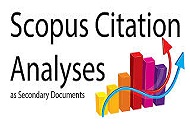EFL Students’ Pronunciation Problems in Presenting Thesis Proposal at Tertiary Level of English Department
DOI:
https://doi.org/10.33394/jk.v7i3.3921Keywords:
Pronunciation Problem, Phonology, Phonetic, Segmental Feature.Abstract
The aim of the research is to investigate EFL Students’ Pronunciation Problems in Presenting Thesis Proposal at Tertiary Level of English Department. This qualitative study reported in this article focused on segmental features problems. The instruments used to collect the data needed in this study were the researcher, recording, and Dictionary. The data analysis covered consonant and vowel pronunciation problems. was based on the theories of phonetics proposed by George Yule and Jacobs, which embraces voicing, manner of articulation and place of articulation for English consonant production and the tongue part and position, sound length, and mouth forming for English vowel production. The result of the study shows that the research subject encountered a number of segmental pronunciation problems consisting of consonants and vowels including pure vowels and diphthongs. Furthermore, this research revealed that the problem with consonant sounds were the substitution of the sounds [v], [ð], [θ], [t∫], [Ê’], [ʃ] [z] and the deletion of the  sounds [k], [É¡], [t], and [s]. The problem with pure vowel sounds were the substitution of the sound [ɪ], [iË], [É›], [ÊŠ], [ÊŒ], [ÉœË], [É’], [É”Ë] and [É™] and the insertion of the sound [É™] between two consonant sounds. The problem with diphthongs were: the monophthongization of the sound [aɪ], [aÊŠ], [eɪ], [ɪə], [əʊ], and the replacement of the sounds [eɪ] and [ɪə] with other diphthongs. It is suggested for the next researchers to investigate pronunciation problems related to supra-segmental aspects and phonemic opposition. and factors driving pronunciation problems in the EFL Classroom setting.
References
Alimemaj, Z. M. (2014). European Scientific Journal. English Phonological Problem Encountered By Albanian Learners, 10, 159-164.
Andi-Pallawa, B. (2013). International Journal of English Language Education. A Comparative Analysis between English and Indonesian Phonological Systems.1. 103-129.
Ary, D., Jacobs, L. C., Sorensen, C., & Razavieh, A. (2010). Introduction to research in education. New York: Nelson Education, Ltd.
Cahya, N. C. A. (2017). The comparison of pronunciation error in vowel sounds between early adolescence learners and mid adolescence learners in foreign language learning. Journal of English Teaching, Literature, and Applied Linguistics, 1 (1).
Gilakjani, P.H. (2011). A study on the situation of pronunciation instruction in ESL/EFL classrooms journal of studies in education. Journal of Studies in Education, 1, 73-83.
Hornby, A. S. (2005). Oxford Tertiary Learner’s Dictionary 7th Edition. New York: Oxford University Press.
International Phonetic Association. (2015). The International Phonetic Alphabet and the IPA Chart. Retrieved March 3, 2020 from https://www.internationalphoneticassociation.org/content/ipa-chart
MacMahon, A. (2002). An Introduction to English Phonology. Edinburgh: Edinburgh University Press.
Malah, Z., & Rashid S. M. (2015). International Journal of Languages, Literature and Linguistics. Contrastive Analysis of the Segmental Phonemes of English and Hausa Languages, 2, 106-112.
Miles, M.B., Huberman, A.M. and Saldana, J. (2014). Qualitative Data Analysis: A Methods Sourcebook (3rd Edition). London: Sage Publications.
Mustikareni, D. (2013). Error Analysis on English Diphthongs Pronounced by The Students of SMA Negeri 1 Comal And SMA Negeri 1 Banjarnegara In English Debate on Relax†TV Program of TVRI ( Unpublished thesis), Semarang State University.
Purba, D. P., Bangun, M. N., Pramana, E. P., Sinaga, R. M. J., & Tarigan, S. N. (2019). An analysis students’ vowel in pronunciation. Linguistic, English Education and Art (LEEA) Journal, 3 (1), 180-188.
Ramasari, M. (2017). Students’ pronunciation error made in speaking for general communication. Linguistics, English Education and Art (LEAA) Journal, 1 (1), 37-48.
Roach, P. (2009). English Phonetic and Phonology: A Practical Course (4th Edition), New York: Cambridge University Press.
Rosyidah, R. U. (2014). An Analysis of Phonetic Interferences on Students’ English Pronunciation in ShobahulLughoh Program of Ma’hadSunanAmpel Al Aly ( Unpublished thesis), English Departement of UNJ.
Sahatsathatsana, S. (2017). Pronunciation problems of Thai students learning English phonetics: A case study at Kalasin University. Journal of Education, Mahasarakham University, 11 (4).
Szynalski, T. P. (n.d.). (2020).. English Vowel Chart [chart]. Retrieved March 3, 2020 fromhttp://www.antimoon.com/how/english-vowel-chart.png
Wikipedia. (2016). International Phonetic Alphabet. Retrieved March 4, 2020 from https://en.wikipedia.org/wiki/International_Phonetic_Alphabet#English
Yule, G. (2010). The Study of Language. New York: Cambridge University Press.
Downloads
Published
How to Cite
Issue
Section
Citation Check
License
License and Publishing AgreementIn submitting the manuscript to the journal, the authors certify that:
- They are authorized by their co-authors to enter into these arrangements.
- The work described has not been formally published before, except in the form of an abstract or as part of a published lecture, review, thesis, or overlay journal.
- That it is not under consideration for publication elsewhere,
- That its publication has been approved by all the author(s) and by the responsible authorities – tacitly or explicitly – of the institutes where the work has been carried out.
- They secure the right to reproduce any material that has already been published or copyrighted elsewhere.
- They agree to the following license and publishing agreement.
Authors who publish with JK agree to the following terms:
- Authors retain copyright and grant the journal right of first publication with the work simultaneously licensed under a Creative Commons Attribution License (CC BY-SA 4.0) that allows others to share the work with an acknowledgment of the work's authorship and initial publication in this journal.Â
- Authors are able to enter into separate, additional contractual arrangements for the non-exclusive distribution of the journal's published version of the work (e.g., post it to an institutional repository or publish it in a book), with an acknowledgment of its initial publication in this journal.
- Authors are permitted and encouraged to post their work online (e.g., in institutional repositories or on their website) prior to and during the submission process, as it can lead to productive exchanges, as well as earlier and greater citation of published work.
- Open Data Commons Attribution License, http://www.opendatacommons.org/licenses/by/1.0/ (default)

This work is licensed under a Creative Commons Attribution-ShareAlike 4.0 International License.








